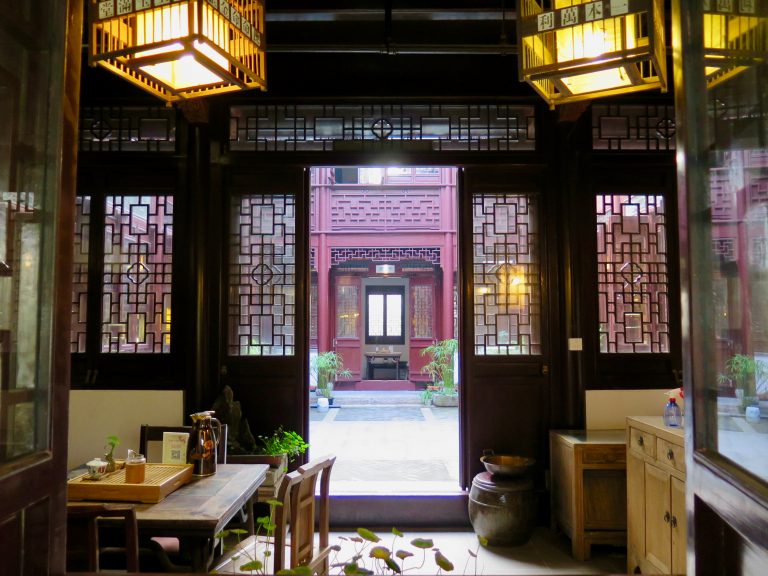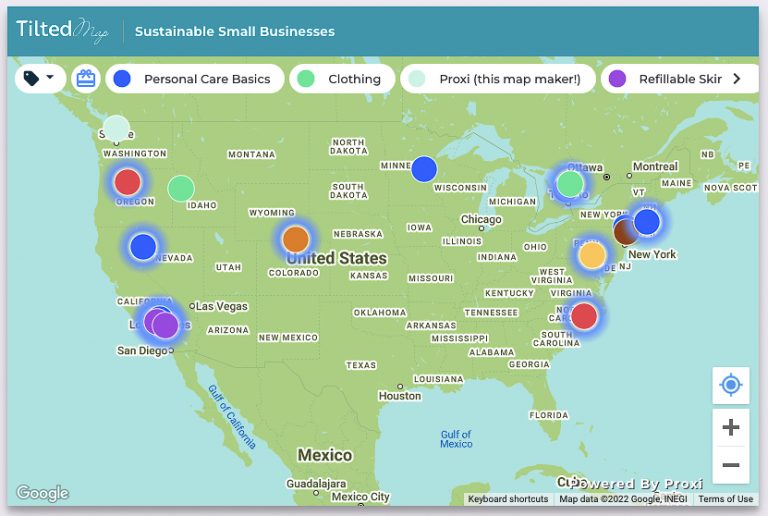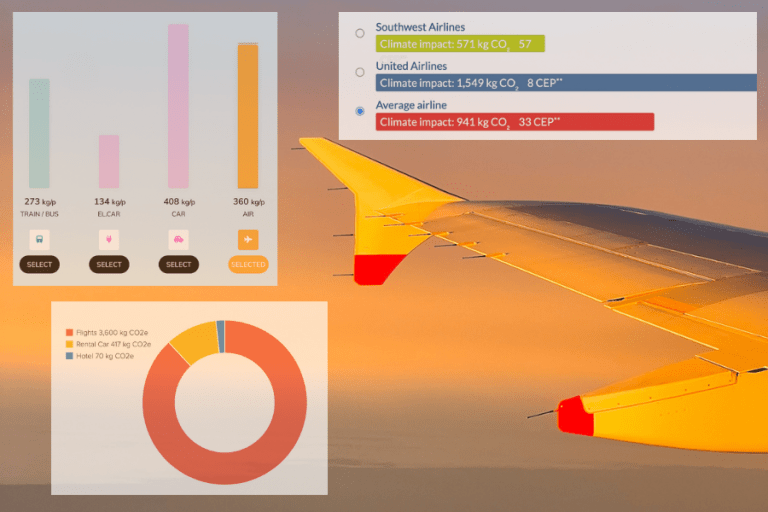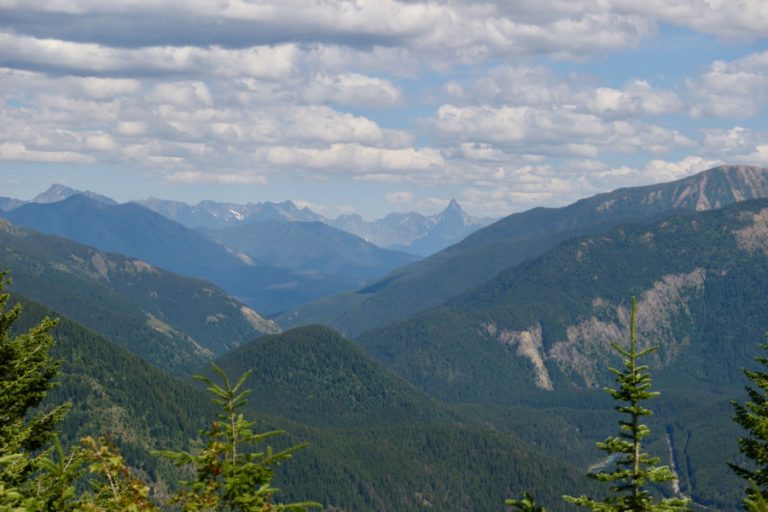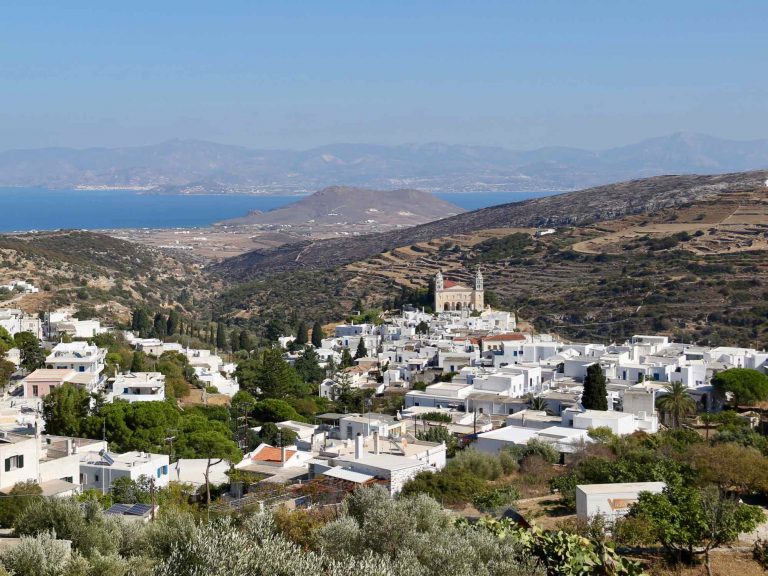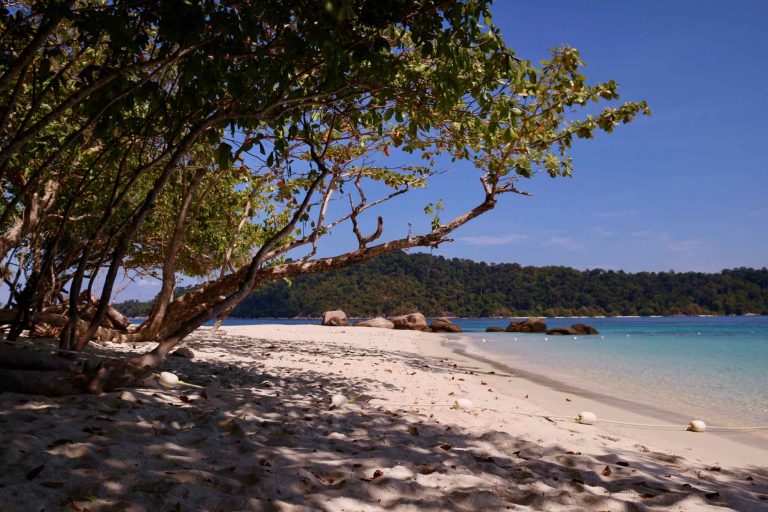What It Was Really Like Visiting Maui During COVID-19
This is my personal experience of visiting Maui during the COVID-19 pandemic, in December, 2020, including testing options and requirements, mask rules vs. reality, and what we can learn from Hawaii about travel during a pandemic.
At the end of a year mostly spent in quarantine in the cold climates of Chicago and Montana, two weeks in tropical Maui, waking up to the chirping sounds of birds and geckos and a consistently perfect temperature really was nothing short of heavenly.
Hawaii re-opened for limited tourism on October 15, 2020, and my husband, Emanuele, and I decided to give it a shot and visit my cousin and his wife, who live on Maui. He works at the airport and she works in the hospital, so talking with them gave me a pretty unique perspective on everything happening on the island regrading COVID and tourism.
The fact that we were staying with family made the logistics much less stressful – although deciding whether it made sense to go, and getting there from Montana were both amazingly complicated – and I am no stranger to complex travel planning! It all gave a lot of insight into what travel might be like for a while to come, which is what I want to share in this post.
(Related: For when I don’t have family to stay with, here are my favorite unique alternatives to AirBnb and Couchsurfing, including eco-friendly options from luxe to affordable, where you can stay with locals, in nature, or in unused RVs.)
Once we actually arrived on Maui, it dawned on me that one of the most refreshing, relaxing things about being there – besides the obvious sun, surf, and the break from Zoom-life – was that people followed the rules.
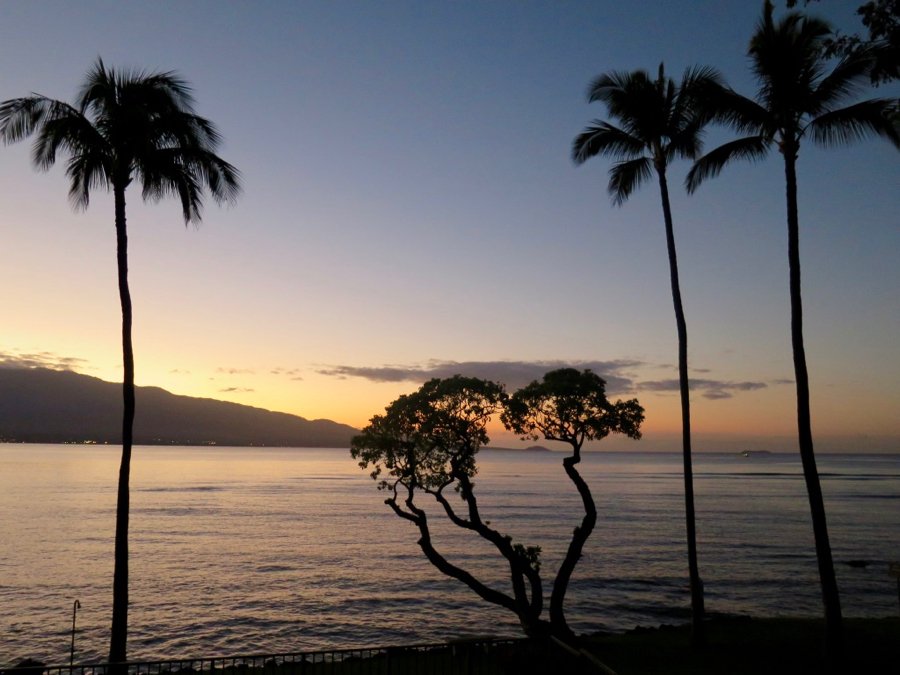
There have been some horrific headlines about arrogant, disrespectful pandemic travelers in Hawaii recently, but my experience was nothing like that.
It almost felt like the pandemic didn’t exist on Maui – but not because people didn’t wear masks. Quite the opposite:
In grocery stores and restaurants on Maui, I never saw a single person even try to get around the mask mandate. Every entrance had hand sanitizer available, and most patrons used it.
Coming from a place where a lot of people haven’t been following the rules, it really took the stress level down a notch to feel like everyone – locals and tourists alike, with few exceptions – was acting like we were all in this together; just following the rules for the common good.
My expectations are almost certainly too low. But let me explain where I’m coming from.
I’ve spent most of the pandemic in Montana, which is where I grew up, but I haven’t lived here in years. And I’ve spent it watching in frustration how so many people here are acting like it’s still the Wild West: As if they were lone rangers, responsible only to themselves, and not willing to put on a mask or do anything else for the good of the people around them. (Montana had a mask mandate, which people followed to the degree that they felt like it, but a new governor repealed it as soon as he took office, apparently so as not to infringe on our grand American freedom to spread the virus.)
Since any kind of government regulation here has been minimal, my quarantining has been mostly self-imposed, but that didn’t make it any less stifling. In fact I think quarantining on my own, knowing most of my neighbors continue going about life as usual, leaves the nerves even more ragged.
So that’s what I mean when I say it felt like the pandemic didn’t exist on Maui. It’s not about the willful ignorance of not wearing masks, but the community spirit of wearing them and just not making a big deal out of it.
Because personally, I don’t need to be able to take off my mask to feel like things are going to be okay; I need to see that I can trust the people around to make a small sacrifice (like giving up the freedom of a naked face) to help protect the community. That’s what makes me feel like things are going to be okay. And that was mostly what I saw on Maui. It made me feel safe. (Mahalo, people of Maui!)
Masks are required in public in Hawaii
Even though masks are required in all public places on the islands when you’re within 6 feet of anyone, from what I saw, their use was a little more mixed on beaches and trails, compared with in stores and restaurants.
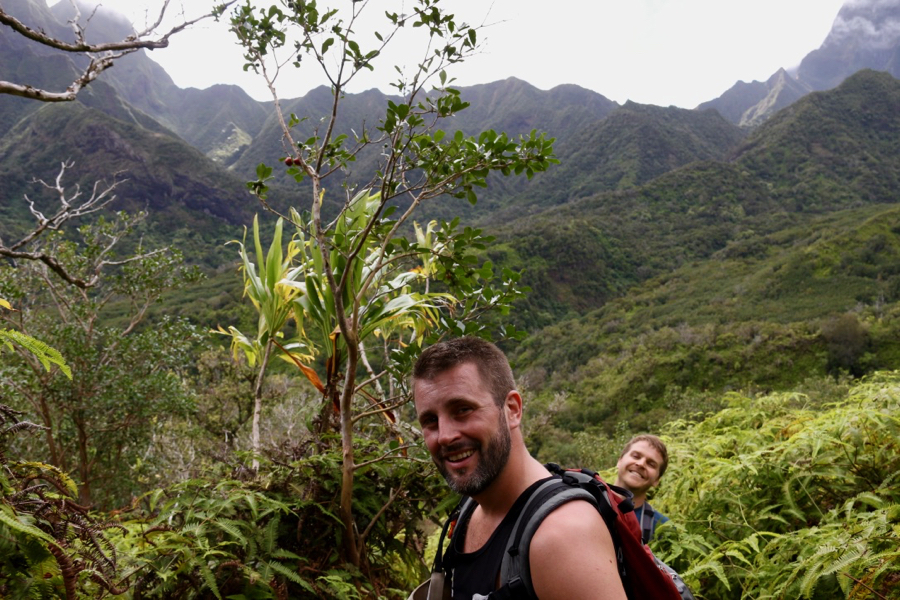
But still, it was obvious that everyone I came across while walking down the beach, for example, made a conscious effort to keep a distance, regardless of whether they were wearing a mask. A lot of people covered their faces with a towel or hat while crossing paths, or just stopped talking with their companion while walking by us. (But a friendly smile and nod were always Maui-appropriate, even silent ones to avoid exchanging any droplets.)
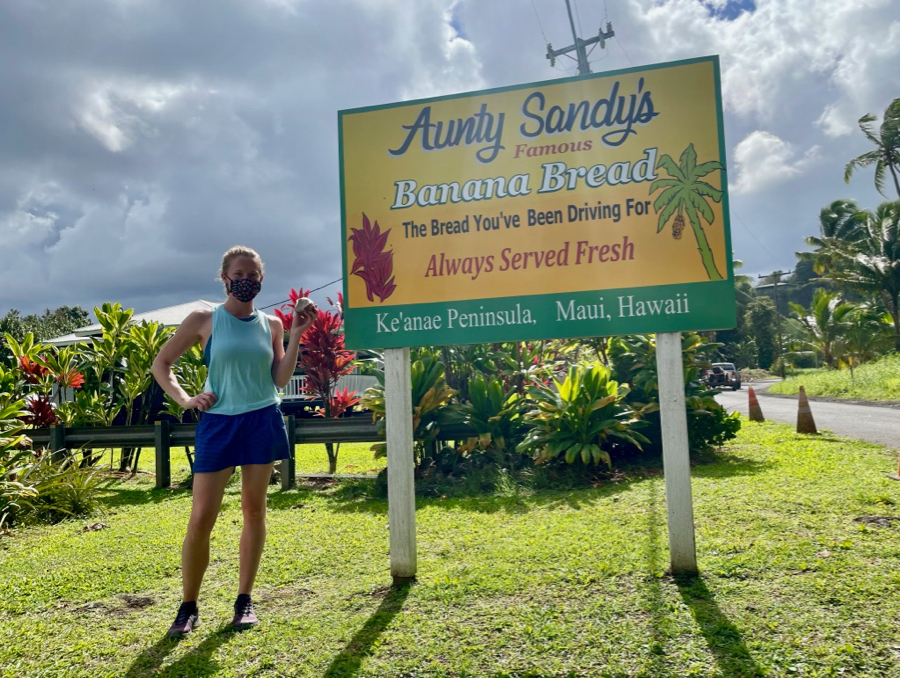
Bottom line: If you’re not comfortable wearing a mask and maintaining social distance, don’t travel right now – first and foremost – and definitely don’t go to Hawaii. You would feel really out of place.
On arrival in Kahului, the airport seemed extremely well organized.
We walked through an infrared fever-scanning tube as we left the plane (although some recent reports show those might not be effective at catching COVID cases).
There were booths set up where each traveler had to show their negative test results to an airport employee, who scanned the QR code through a plexiglass barrier. The process moved really smoothly. (And I was glad to see that those results were actually being checked – sometimes requirements like these seem serious, but then you show up and no one checks whether you’ve actually jumped through all the hoops. This was very different and felt like Maui was taking it seriously.)
As I mentioned above, I already wrote another post about the process of finding a Hawaii-approved COVID testing site before our trip. (The pre-travel test lets travelers from the US mainland, Canada, Japan and Korea avoid a 14-day quarantine, and it’s the traveler’s job to pay for it. Our tests were $250 each because, as we were traveling from Montana, getting tested during our layover in the Seattle airport was the only option that would give us results within the required timeframe.)
- Here’s more info about Hawaii’s Safe Travels Program, and the list of Trusted Travel Partners for testing
COVID-19 Testing On Arrival in Maui
Once you’re through the airport, the Maui government encourages travelers to volunteer for a second, totally free, test between three and seven days after arrival. (And COVID tests are free for locals there, too, so you don’t have to feel guilty for getting special treatment as a tourist.)
Since the local government clearly wanted visitors to get retested, I had no problem volunteering for it. I would have felt more comfortable getting a second test anyway, plus Maui makes it easy: You just book an appointment online for a drive-through test. Ours took less than five minutes and we had the results by email within an hour. (If you’re planning a trip to Maui, I recommend booking your test several days early – as soon as you arrive. When I booked ours, the earliest appointment on our side of the island was several days out.)
- More info about current Maui travel + testing requirements
- This is where you book your free COVID test on arrival in Maui
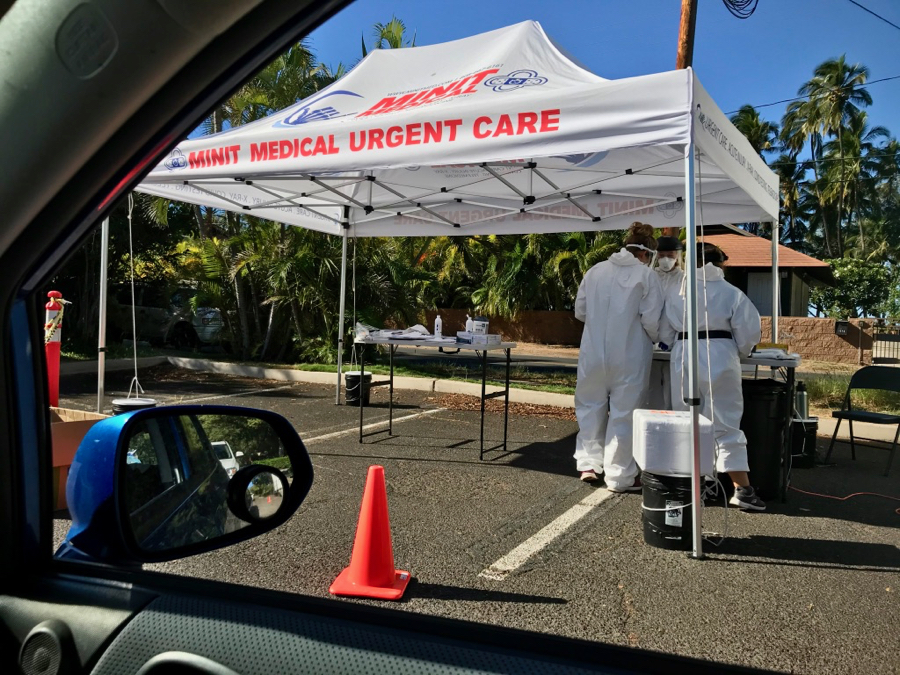
COVID + Tourism in Hawaii & Beyond
I really appreciate that Hawaii is letting travelers in again, and I appreciate even more that they’re doing it so carefully. I think it’s pretty obvious that we’ll soon see more destinations doing something similar – requiring negative COVID tests and/or proof of vaccination for travelers to visit.
I think it makes perfect sense, and would allow local economies to start up again in a safer and more controlled way. (Which is especially important in places like Hawaii, where 20% of people work in tourism.)
In fact, none of this is new or unique. Lots of countries in South America and across the middle of Africa require traveler’s to get a yellow fever vaccine. As of January 26, the US requires a negative test for anyone landing here, regardless of whether they’ve had a vaccine, and regardless of whether they’re a visitor or returning resident. (It doesn’t apply to land border crossings right now.) And the CDC has considered the same for domestic flights, too.
Unfortunately, this isn’t quite the end of the story.
Shortly after I left Hawaii, Maui tightened some restrictions due to an increase in COVID cases. Bars and restaurants were open at 50% capacity when I was there in December, but that was reduced to 30% capacity at the end of the year.
Newspapers quoted locals saying the spike was clearly due to tourists, citing gatherings of tourists they’d seen at certain beaches – which is obviously terrible. That’s exactly the kind of tourism horror story I was referring to: People showing up as visitors and not following the rules.
But it’s also hard to believe that the majority of the spread was due to tourism when every tourist was being tested before and often after arrival – although it’s possible tourists showed up COVID-free, then got relaxed on the island, picked up the virus, and spread it. And false negatives do happen. Either way, Hawaii’s case spikes were much bigger while the state was still completely closed to tourists.
When the bar and restaurant restrictions tightened, a local newspaper reported this:
“The state’s latest cluster report shows three cases tied to the tourism industry in Maui County, nine other cases were traced to social gatherings, and there are also clusters linked to bars and places of worship.”
That makes sense, considering that I saw plenty of large groups of locals gathered without masks on the beaches, too. (I don’t know if they were large families, extended families, or small neighborhoods, but they were groups of people without masks.) And that’s hard to grapple with. It’s hard to say, “Yeah, some tourists are breaking the rules, but locals are part of the problem, too.” People don’t want to hear that. They just want to be mad at tourists, even when they depend on them.
I bought a $10 coconut from a local woman with no teeth. I imagine she really needed the money. People who work in tourism are struggling – but especially small, independent vendors, who might be in the informal economy (ie. the black market for coconuts) and might not even be eligible for unemployment. But how do I know she had no teeth? She wasn’t wearing a mask.
I’m not picking on Hawaii. This is about everyone, everywhere.
Tourism isn’t the entire problem, and it shouldn’t be the entire solution for local economies, either. It’s reasonable to be mad – at tourists, or the government, or someone – if you don’t have any other financial option besides depending on tourism.
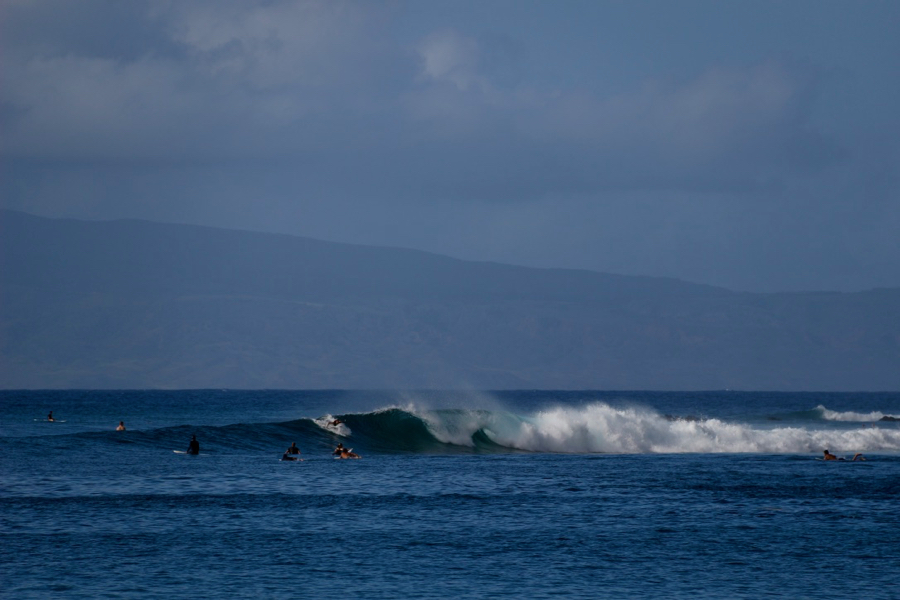
Tourists slammed Montana this summer, as everyone and their brother decided to go camping or visit a national park for the first time – but I’ve seen the way many locals behave in Montana, so it would be impossible to just blame tourism for our fall increase.
People are always going to be more angry when they see tourists breaking the rules than when they see locals breaking them – which both totally makes sense and doesn’t at all.
Locals are the place. They’re there for their lives and livelihoods and families, not just for a fun distraction.
Plus, in Hawaii especially, a big part of the anger over tourists doing stupid things (pandemic-related or not) is that these are islands with limited resources. Maui, for example, only has about 200 hospital beds and 30 ventilators. If tourists show up en masse and break the rules (which locals, for the most part, have been following rigorously, even when tourism was shut down and there were almost no COVID cases) they could quickly run through those resources. This is what happened in Northern Italy last spring, with tragic results, but in the middle of the Pacific Ocean, you don’t have the option to send sick people to other hospitals across the state line.
But we’re in a globalized, connected world, and there’s no going back from that.
Travel and migration are going to keep happening, and this probably won’t be the last pandemic we deal with. So we can’t just keep saying “blame the outsider, blame travelers, blame people who don’t stay home.” (Personally, I get most frustrated seeing locals acting with no respect for the community, and politicians not prioritizing flattening the curve.)
This isn’t necessarily a popular opinion, and some people disagree with me about the ethics of traveling at all during a pandemic. But I don’t think we can pretend it’s working for half the country to say “Stay home, end of conversation,” and the other half to live as if it were 2019.
When will it be enough?
I don’t know what the solution is, given that people don’t want to listen to scientific advice, but I know “travel shaming” isn’t it. (Again, I wrote about this in my first Hawaii post.)
And I’ve been really, really firm on the whole “Stay Home, Stay Safe” concept since the beginning. I stopped leaving my apartment in Chicago at least a week before things closed. And since moving to Montana this summer, I haven’t been to a restaurant or bar even once – despite them being open throughout most of the pandemic.
So I’m not saying we shouldn’t stay home. I’m saying that at the end of the day, beating this pandemic still comes down to taking precautions and following the rules, no matter where you are, whether you’re a local or a tourist.
And I don’t necessarily mean the local rules, which sadly are nothing more than politics in a lot of places. I mean the rules we all know because we’ve heard them one trillion times in the past 12 months:
- Wear a damn mask over your mouth and your nose.
- Don’t take it off while you’re around people.
- Use hand sanitizer frequently.
- More frequently. (Bonus: Make it plastic-free hand sanitizer.)
- Stop touching stuff!
- Keep your social distance.
- Don’t gather in big groups.
- Do all of those things regardless of what your governor says. This is not that hard.
We can just preach “stay home” (as much of the travel industry is understandably doing) and shut everything down indefinitely, but it still won’t fix the problem when half of the population won’t even follow those basic concepts of hygiene to minimize transmission.
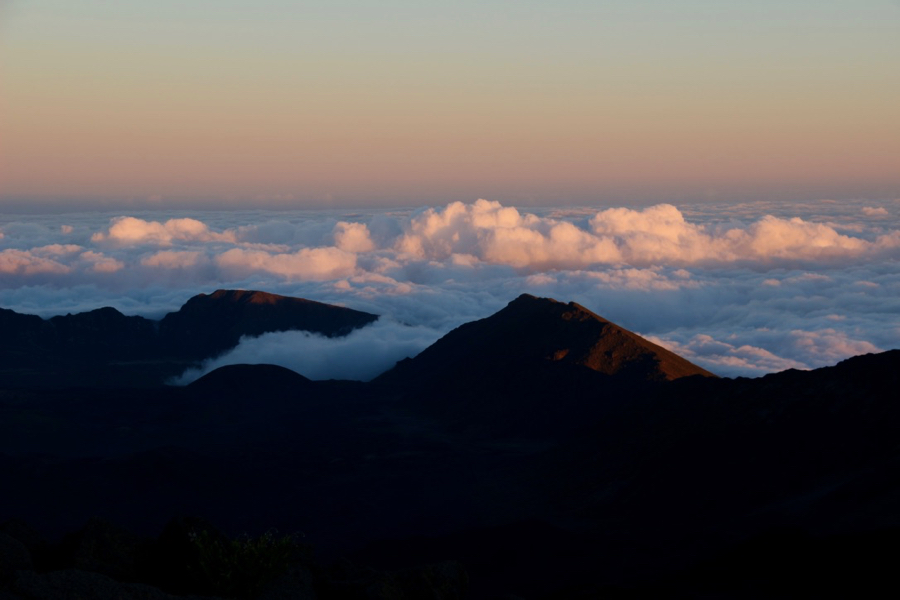
That’s all for now. As you can see, it took me a while to process my thoughts on all of this after my first real travel experience during pandemic. In another post soon will be a few recommendations for local restaurants on Maui, places to visit on the island, reef-safe sunscreens (now mandatory in Hawaii!) and other eco-friendly packing tips.

